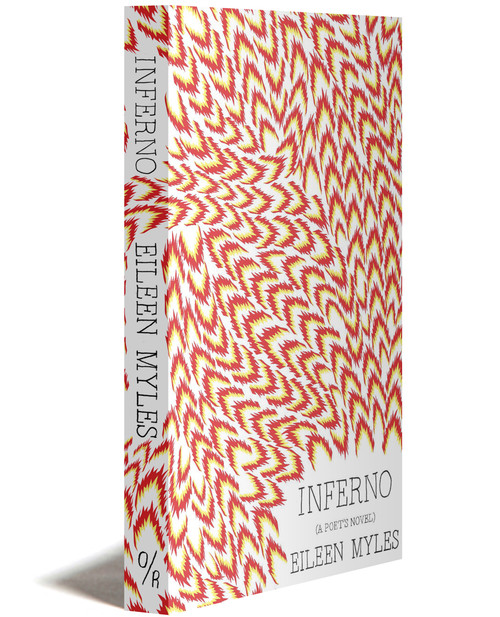Writing on Raving
“Candid and critical, intimate and revealing, Writing on Raving explores dance floor craving and transformation, autonomy and inspiration, with moves sleek and slippery.”
—Mattilda Bernstein Sycamore“Anyone who’s painted rave as pure hedonism, escape, or utopia must face this collection of personal rave encounters. This book isn’t history or theory—it documents the phenomenology of raving as it exists now.”
—Eris Drew“Intricacies of the rave that only those who have put in the witching hours know.”
—Michelle Lhooq, Independent journalist at Rave New World“Is it possible to have a crush on a book? If so, I have a crush on Writing on Raving...”
—Tavia Nyong'oabout the bookabout
New York rave culture is having a moment. The music, mostly, is techno, certain flavors of which became the soundtrack to a dancefloor culture that is queer in a different way to house music-centered gay nightlife. Wark, Mak, and Beery want to document and annotate and celebrate, but also critique, this world in the making. Writing on Raving centers the New York scene, but isn’t limited to it.
This is a book for all of those who need the rave. Who need to dance. Who have at some point needed that beat in their lives. This is a book for all those who have journeyed through the night, through sound, through movement, through chemistry, into other places, other times, other encounters.
Contributors: hannah baer, Zoë Beery, Destiny Brundidge, Harry Burke, Ev Delafose, Zoey Greenwald, Isabelia Herrera, Kumi James, Zora Jade Khiry, Geoffrey Mak, madison moore, MORENXXX, Afsana Mousavi, Brittany Newell, MX Oops, E. R. Pulgar, Slant Rhyme, Gavilán Rayna Russom, Anne Lesley Selcer, Journey Streams, Linn Tonstad, cranberry thunderfunk, McKenzie Wark, Frankie Wiener, Simon Wu, Chris Zaldua.
About The Author / Editor
Preview
Introduction
You meet a lot of interesting people at the rave. Waiting in line, cadging a smoke, sharing poppers, or at kiki in the green room. You get talking. People turn out to have all sorts of other lives. Not a few, it turns out, are writers. Or if not writers, they have some sliver of experience with the rave that would be worth writing about.
We feel like we share something when we rave, but what? It turns out, paradoxically, that we share a lot, but what we think we share can be very different. We even have different notions of what a rave is, what raving is. And that’s OK. It’s a continuum of wants, needs, feelings, to which we hold with different degrees and qualities of intensity, and won’t let go.
Two of us—Zoë Beery and Geoffrey Mak—started a series of readings called Writing on Raving. It felt like there should be a space outside of the party to share some writing, to talk about it, where we wouldn’t have to shout over the thump and womp, where maybe we would be so drug-fucked. A third—McKenzie Wark—was in the first lineup and joined the group from then on. We’ve been running Writing on Raving for just over three years. Most of the series have been in club spaces, before the night really begins. We want to bring writing closer to the party, we want for once to do readings that have good lighting, a real sound system, a fog machine, even.
A good dancefloor has a curated mix of people. Whoever works door has to be a good editor. Door, like an editor, has to know the difference between two meanings of discriminating. She has to have a taste for variety and quality, for dancers who will mix well and know how to handle themselves. She has to know how to do this without discrimination in another sense of the word—conscious or unconscious prejudices around race, gender, sexuality, ability, age. We, as editors, learn from those other editors, on the door, when they let us pass, or don’t.
Writing on Raving is, we hope, like a good dancefloor. There’s different kinds of style, knowledge, interests, experiences. We put the texts together as they might arrange themselves on the dancefloor, or in a mix: congenial proximities, energizing frictions, ambiguous flirtations. We’ve put together some who are writers first and ravers second, and some who are ravers first and writers second. A good book, like a good party, is one where everyone has something different to give.
New York rave culture is having a moment. The music, mostly, is techno, certain flavors of which became the soundtrack to a dancefloor culture that is queer in a different way to house music-centered gay nightlife. If the party is a good one you’ll find a lot of trans people there, and a lot of people you’ll have a hard time classifying at all easily. We like it that way. We want to document and annotate and celebrate, but also critique, this world we are all making together. Here and elsewhere. Writing on Raving centers the New York scene, but isn’t limited to it.
Raving is nothing new, and it’s been different things at different times. We’re resistant to nostalgia. We’re interested in what it is now. Still: we honor our ancestors. Techno is Black music. The art of dance as we know it is Black technology. This always has to be said so it doesn’t get erased.
This is a book for all of those who need the rave. Who need to dance. Who need that beat in their lives, or to have been in their lives. This is a book for all those who have journeyed through the night, through sound, through movement, through chemistry, into other places, other times, other encounters. Not all of them welcome. There’s risk and hurt out there, and we don’t shy away from that in Writing on Raving.
Sometimes, at the afters, tired and drained and covered in schmutz, we look around at our raver friends, and wonder: How did we get here? What happened to us? What is this tentacular, thrashing, swelling thing that we all made together? That thing now slumped and aching and coming down into its fragmentary singular lives. There’s a lot of answers to such questions. We’ve gathered our favorite ones to share with you.
in the media
Writing on Raving
“Candid and critical, intimate and revealing, Writing on Raving explores dance floor craving and transformation, autonomy and inspiration, with moves sleek and slippery.”
—Mattilda Bernstein Sycamore“Anyone who’s painted rave as pure hedonism, escape, or utopia must face this collection of personal rave encounters. This book isn’t history or theory—it documents the phenomenology of raving as it exists now.”
—Eris Drew“Intricacies of the rave that only those who have put in the witching hours know.”
—Michelle Lhooq, Independent journalist at Rave New World“Is it possible to have a crush on a book? If so, I have a crush on Writing on Raving...”
—Tavia Nyong'oabout the bookabout
New York rave culture is having a moment. The music, mostly, is techno, certain flavors of which became the soundtrack to a dancefloor culture that is queer in a different way to house music-centered gay nightlife. Wark, Mak, and Beery want to document and annotate and celebrate, but also critique, this world in the making. Writing on Raving centers the New York scene, but isn’t limited to it.
This is a book for all of those who need the rave. Who need to dance. Who have at some point needed that beat in their lives. This is a book for all those who have journeyed through the night, through sound, through movement, through chemistry, into other places, other times, other encounters.
Contributors: hannah baer, Zoë Beery, Destiny Brundidge, Harry Burke, Ev Delafose, Zoey Greenwald, Isabelia Herrera, Kumi James, Zora Jade Khiry, Geoffrey Mak, madison moore, MORENXXX, Afsana Mousavi, Brittany Newell, MX Oops, E. R. Pulgar, Slant Rhyme, Gavilán Rayna Russom, Anne Lesley Selcer, Journey Streams, Linn Tonstad, cranberry thunderfunk, McKenzie Wark, Frankie Wiener, Simon Wu, Chris Zaldua.
About The Author / Editor
Preview
Introduction
You meet a lot of interesting people at the rave. Waiting in line, cadging a smoke, sharing poppers, or at kiki in the green room. You get talking. People turn out to have all sorts of other lives. Not a few, it turns out, are writers. Or if not writers, they have some sliver of experience with the rave that would be worth writing about.
We feel like we share something when we rave, but what? It turns out, paradoxically, that we share a lot, but what we think we share can be very different. We even have different notions of what a rave is, what raving is. And that’s OK. It’s a continuum of wants, needs, feelings, to which we hold with different degrees and qualities of intensity, and won’t let go.
Two of us—Zoë Beery and Geoffrey Mak—started a series of readings called Writing on Raving. It felt like there should be a space outside of the party to share some writing, to talk about it, where we wouldn’t have to shout over the thump and womp, where maybe we would be so drug-fucked. A third—McKenzie Wark—was in the first lineup and joined the group from then on. We’ve been running Writing on Raving for just over three years. Most of the series have been in club spaces, before the night really begins. We want to bring writing closer to the party, we want for once to do readings that have good lighting, a real sound system, a fog machine, even.
A good dancefloor has a curated mix of people. Whoever works door has to be a good editor. Door, like an editor, has to know the difference between two meanings of discriminating. She has to have a taste for variety and quality, for dancers who will mix well and know how to handle themselves. She has to know how to do this without discrimination in another sense of the word—conscious or unconscious prejudices around race, gender, sexuality, ability, age. We, as editors, learn from those other editors, on the door, when they let us pass, or don’t.
Writing on Raving is, we hope, like a good dancefloor. There’s different kinds of style, knowledge, interests, experiences. We put the texts together as they might arrange themselves on the dancefloor, or in a mix: congenial proximities, energizing frictions, ambiguous flirtations. We’ve put together some who are writers first and ravers second, and some who are ravers first and writers second. A good book, like a good party, is one where everyone has something different to give.
New York rave culture is having a moment. The music, mostly, is techno, certain flavors of which became the soundtrack to a dancefloor culture that is queer in a different way to house music-centered gay nightlife. If the party is a good one you’ll find a lot of trans people there, and a lot of people you’ll have a hard time classifying at all easily. We like it that way. We want to document and annotate and celebrate, but also critique, this world we are all making together. Here and elsewhere. Writing on Raving centers the New York scene, but isn’t limited to it.
Raving is nothing new, and it’s been different things at different times. We’re resistant to nostalgia. We’re interested in what it is now. Still: we honor our ancestors. Techno is Black music. The art of dance as we know it is Black technology. This always has to be said so it doesn’t get erased.
This is a book for all of those who need the rave. Who need to dance. Who need that beat in their lives, or to have been in their lives. This is a book for all those who have journeyed through the night, through sound, through movement, through chemistry, into other places, other times, other encounters. Not all of them welcome. There’s risk and hurt out there, and we don’t shy away from that in Writing on Raving.
Sometimes, at the afters, tired and drained and covered in schmutz, we look around at our raver friends, and wonder: How did we get here? What happened to us? What is this tentacular, thrashing, swelling thing that we all made together? That thing now slumped and aching and coming down into its fragmentary singular lives. There’s a lot of answers to such questions. We’ve gathered our favorite ones to share with you.








